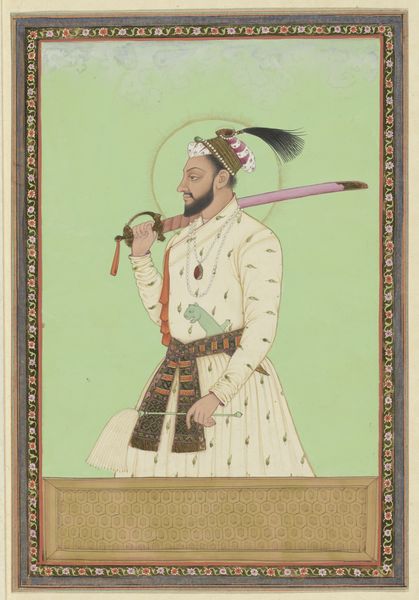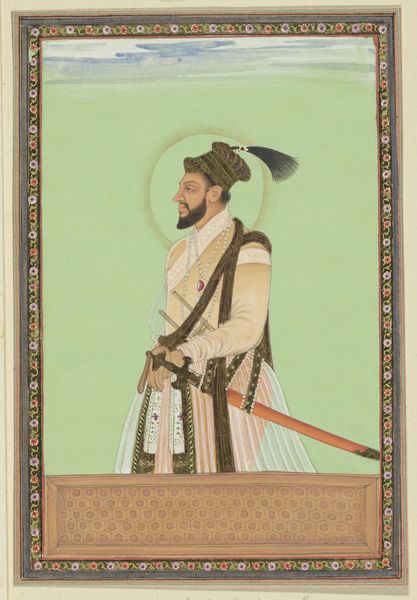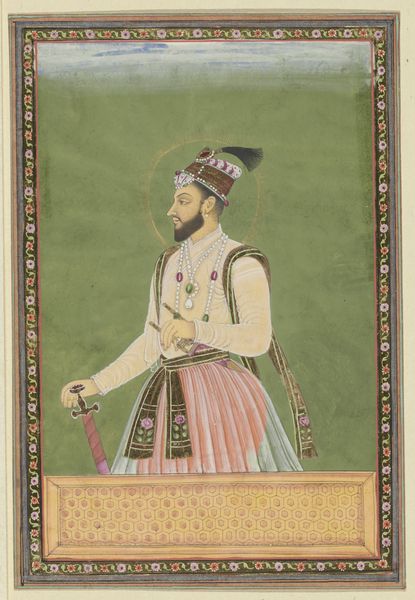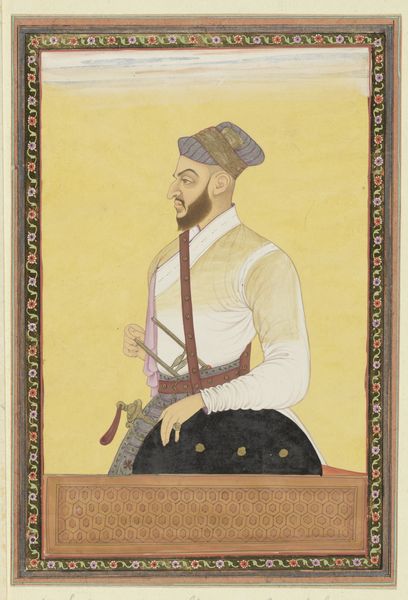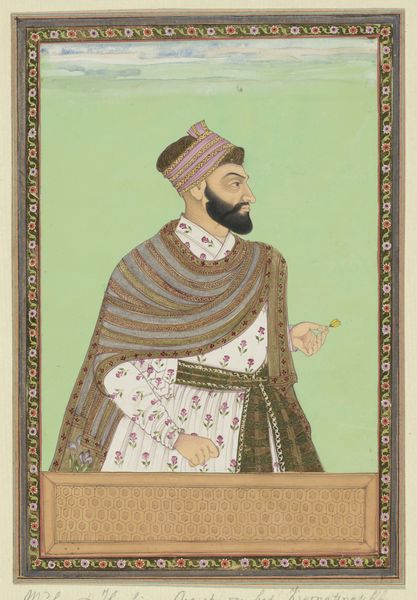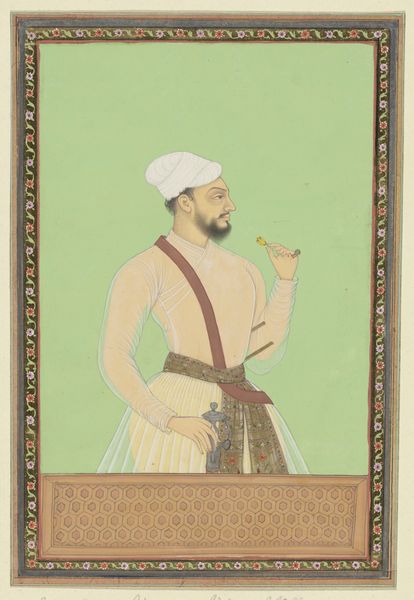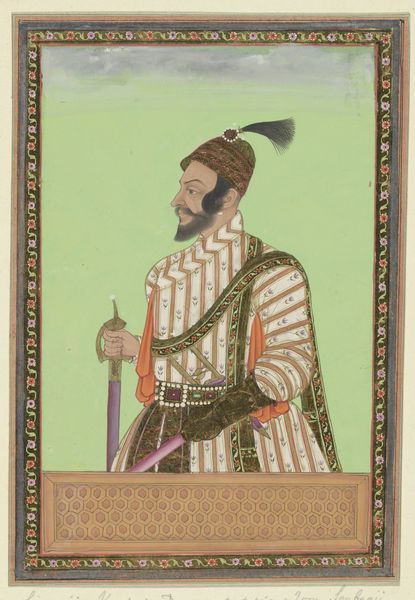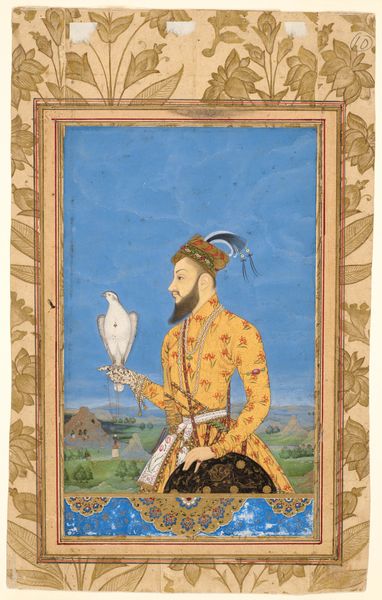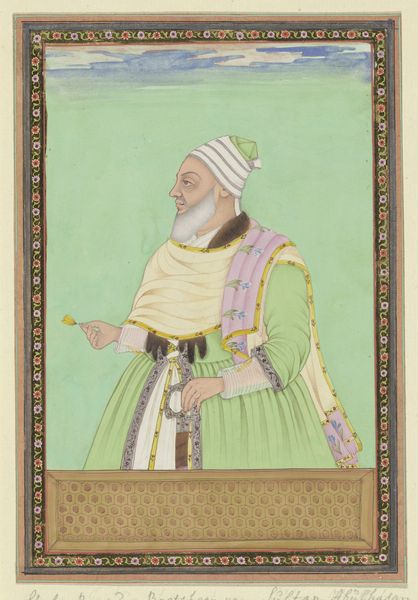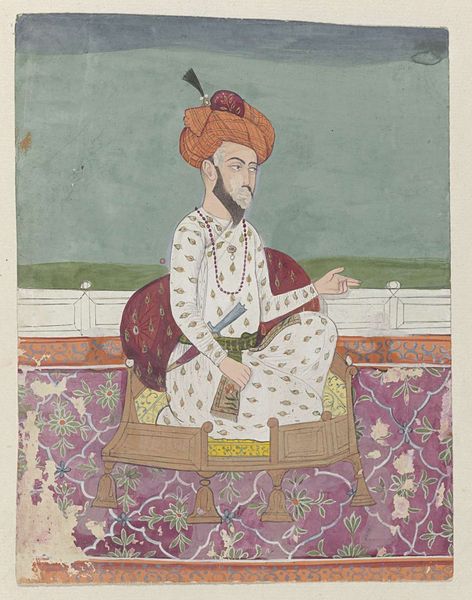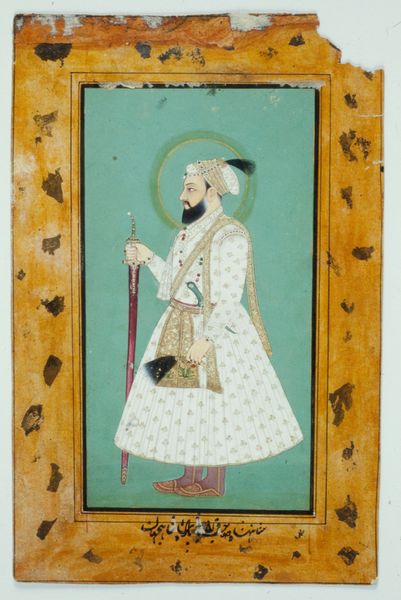
Portret van Shah Alam, zoon van Aurangzeb die na Sultanji werd geboren; hij is eerst gouverneur (subagar) van Deccan geweest; nadat hij vervolgens ten strijde was getrokken tegen Sambaji, de zoon van Sivaji, heeft hij zich nu gekeerd tegen Sultan Abu'l-Hasan en voert oorlog met hem c. 1686
0:00
0:00
painting, watercolor
#
portrait
#
water colours
#
painting
#
caricature
#
watercolor
#
islamic-art
#
watercolour illustration
#
genre-painting
#
miniature
#
watercolor
Dimensions: height 203 mm, width 140 mm
Copyright: Rijks Museum: Open Domain
This undated painting depicts Shah Alam, son of Aurangzeb, and it was made by an anonymous artist. As a historical document, portraits like this reflect the complex interplay of power, identity, and representation in the Mughal Empire. The halo around Shah Alam's head signifies his elevated status, possibly even hinting at divine right. His attire and weaponry are visual indicators of his authority as a governor and military leader. The painting's creation and display would have been influenced by the prevailing social hierarchy, religious beliefs, and political rivalries of the time. This portrait serves as a testament to Shah Alam's position within the empire. To understand its full significance, we can consult historical chronicles, court records, and religious texts. Art history reminds us that such portraits aren't neutral depictions but products of the artist’s choices within a specific time and place.
Comments
No comments
Be the first to comment and join the conversation on the ultimate creative platform.
